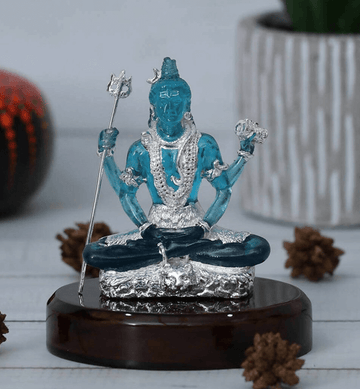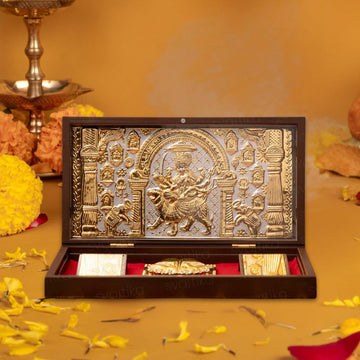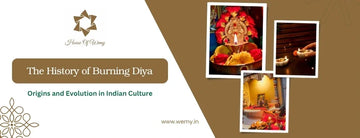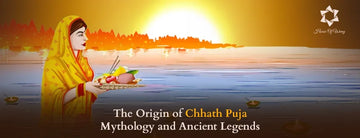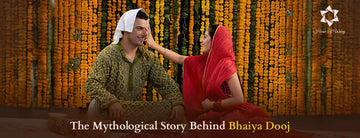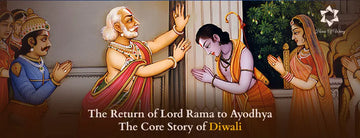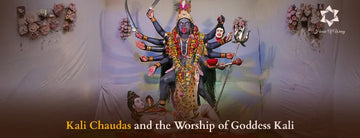Honouring spiritual light and cultural heritage through home temple decor ideas
Introduction
“Diya jalao, light this lamp and awaken centuries of devotion.” This ancient invitation continues to serenade our homes today, to kindle more than simply a flame. At its core, lighting a burning diya represents the deep bond between our inner and outer world: a memory, a devotion, and an identity, especially for people like us who live far from our land of ancestors.
In an age of flickering images on screens, we are reminded of the warm, organic glow of a diya.
It’s no longer a mere ornament in Home Temple Decor Ideas, but a conscious choice to anchor our lives in meaning. Healing, spiritually enriching, and beautifully emblematic, the diya transcends trend; it’s the soul of Indian tradition reframed for modern living. Through this exploration, we’ll walk the diya’s sacred path from scriptural origins and astrological insights to practical application, ultimately embracing its role as both a cultural artifact and a daily devotion.
Cultural & Ritualistic Significance
Roots in Vedas, Puranas & Ancient Artistry
Diya finds its linguistic root in the Sanskrit deepa, meaning “that which gives light.” Archaeological and textual records suggest its use dates back to the Indus Valley era, roughly 2,600 BCE, marking the origin of diya in one of the world’s earliest civilizations. Simple terracotta lamps led to more ornate designs over millennia. Vedic texts, especially the Rig Veda, sing praises of Agni, the divine fire, whose flame in the diya becomes our spiritual envoy, purifying and illuminating both world and soul.
The Puranas, Padma and Skanda, place diyas at the heart of sacred festivals like Deepavali, where they evoke cosmic light and symbolize the victory of good over darkness. In Tamil Nadu, temple shrines feature Nachiarkoil lamps, intricately designed bronze diyas, crafted according to principles laid out in the Shilpa Shastras, marrying spiritual symbolism with artistic precision.
Symbolic Depth of the Flame
When you light a diya, you're performing a diya lighting ritual, a sacred act underscored in Upanishads, Brahmanas, and Puranas as an offering of light to the divine. The flame itself is rich in meaning:
- Agni, the divine messenger: The vibrating flame becomes the bridge between our offerings and the celestial realm.
- Mind's purification: As the wick consumes oil symbolically, ego and impurities, it enacts the soul’s journey toward clarity and self-realization.
- Five‑element harmony: The diya embodies earth, meaning clay; water, meaning oil; fire, meaning flame; air, meaning oxygen; and ether, like space, balancing primal forces for spiritual equilibrium.
The ritual of aarti, waving the flame around the deity, signifies devotion and recognition that the divine presence both enters and nurtures our inner light. This is the essence of Diya symbolism India, a living metaphor for transformation and spiritual awakening.
Practical ‘How‑To’ Guide
Selecting and Preparing Your Diya
Clay diyas are earth-friendly, intimate, and ideal for daily prayers. Brass or bronze versions like the South Indian samai offer longevity and elegance for temples or living-room altars.
Traditional materials include:
- Clay (mitti): Simple, biodegradable, and symbolic of our connection to the earth.
- Brass/bronze: Durable, with intricate designs reflecting craftsmanship defined in Shilpa Shastras.
- Pure ghee or cold-pressed oils like sesame, mustard, and coconut: These promote a stronger flame, less soot, and a warmer ambience, central to the oil lamp Hindu tradition.
Step-by-Step Ritual
- Clean the lamp: Begin with purification, touching the vessel reminds us to purify the mind and space.
- Fill with oil/ghee, leaving some space to avoid spills.
- Insert a cotton wick, with a small 1 cm tip above the rim.
- Light at auspicious times, often early morning or evening, aligns with solar energies and natural rhythms.
- Chant a simple mantra, like Om Deepa Jyoti Parabrahma or the classical “Asato mā… tamaso mā…” leading us from untruth to truth and from death to immortality.
- Perform aarti, moving the lamp with reverence, and thoughtfully receive the flame’s warmth on your hands, symbolic of divine grace entering you.
- Extinguish naturally or mindfully, never greedily, to honor its luminous presence.
These gestures aren’t just ritual; they embody Indian diya tradition in motion, passed down through generations.
Maintenance and Care
Trim the wick regularly for a stable flame. Clean the wick holder and oil residue after every use to maintain sanctity and safety. Choose toxin-free oils like sesame and neem, both recommended in the Shastras for their cleansing properties. This care reinforces your connection to Indian cultural traditions that value purity and intention.
Connection to Modern Lifestyles
Spiritual Décor Meets Daily Ritual
The diya has gracefully transitioned into modern aesthetics, becoming a staple in home temple decor ideas. Minimalist brass lamps, painted clay diyas, or even LED imitations now adorn modern apartments as statement pieces and soul anchors. For those in high-rise urban flats, electric diyas offer safety and ease, though the essence of spiritual light India is best captured in a real flame.
Addressing Contemporary Concerns
- Safety: Use candle-glass holders or place them on metal trays. Always extinguish before leaving home.
- Smoke and soot: Trim the wick, choose refined oils, and use brass versions to reduce residue.
- Live-alone solace: Evening rituals anchor your day, offering calm, focus, and mindful presence.
These practices reimagine the diya in Hinduism for today’s world, anchoring us in tradition while adapting to modern rhythms.
Wellness and Meditation
Focusing on a diya’s flickering flame during meditation is a time-honored Vedic technique. This practice, called Trataka, sharpens concentration and calms the mind. In today’s hyper-digital world, it’s a moment of analog stillness, a reflection of spiritual light India illuminating inner balance.
Astrology & Numerology Insights
In Vedic astrology, Surya (Sun), lord of vitality and consciousness, is honored through fire rituals. Lighting a burning diya on Sunday honors the sun; doing so on Tuesday boosts courage and physical strength due to its alignment with Mars (Mangal).
Numerology suggests:
- Three-wick diyas: creativity and communication.
- Five-wick (Pancha Deepam): balance and healing energies.
- Seven-wick lamps: spiritual ascent and inner awakening.
Even in modern apartments, your choice of diya shape and wick count connects you with the diya evolution through the centuries.
Subtle Wemy Product Integration
To honor tradition while enhancing beauty:
-
Wemy Brass Pooja Diya Stand:
Handcrafted and elegantly aligned with Shilpa Shastra principles, this sturdy stand elevates daily rituals or home altars. It holds your diya steadily and resonates with sacred aesthetics rooted in Indian diya tradition.
-
Wemy Designer Clay Diyas (Hand‑painted):
Sustainably made, these eco-friendly diyas blend age-old clay traditions with modern color palettes, brightening festivals and daily prayers alike. Each diya is a small piece of art, echoing your space’s warmth and reflecting centuries of diya symbolism India.
These offerings are gentle complements, not mere products woven naturally into your spiritual routine.
Community & Emotional Connection
Our collective memories entwine with the glow of diyas. Rekha from California shared:
“Each dawn when I light my diya, I feel my mother’s blessings and my ancestors’ presence. Across oceans and time, it connects me to home.”
In Jaipur’s ancient havelis, evenings come alive with countless diyas, “rivers of hope,” a traveler once said. These are not just sights but experiences threaded in the tapestry of Indian cultural traditions.
In our homes, lighting a diya isn’t ritual; it’s remembrance, celebration, and shared heritage.
Final Thoughts
From the origin of diya in the Vedic era to modern home temple decor ideas, the diya remains a timeless flame of knowledge, tradition, and inner peace. Whether part of a grand temple or a tiny apartment corner, its glow reminds us who we are and where we come from.
Light this lamp not simply out of ritual, but as a conscious meditation, watch your inner flame grow, and with it, wisdom, peace, and belonging. As the flame dances tonight, what part of your inner darkness will it illuminate and transform?
Explore Wemy’s brass pooja stands and designer clay diyas, and deepen your journey through our curated blogs on diya in Hinduism, sacred décor, and the modern revival of Indian cultural traditions.

